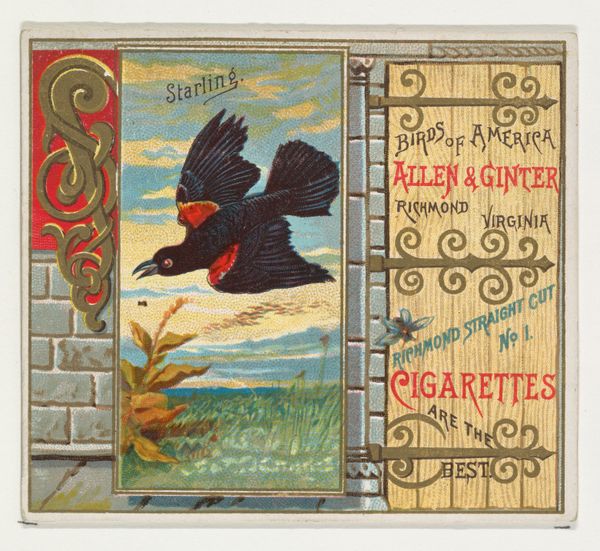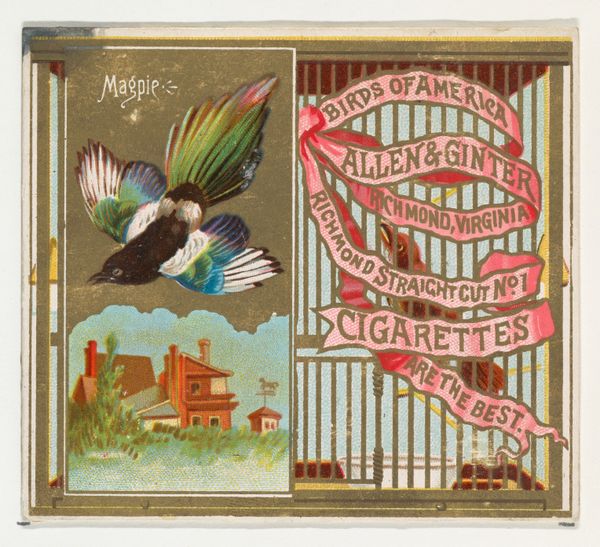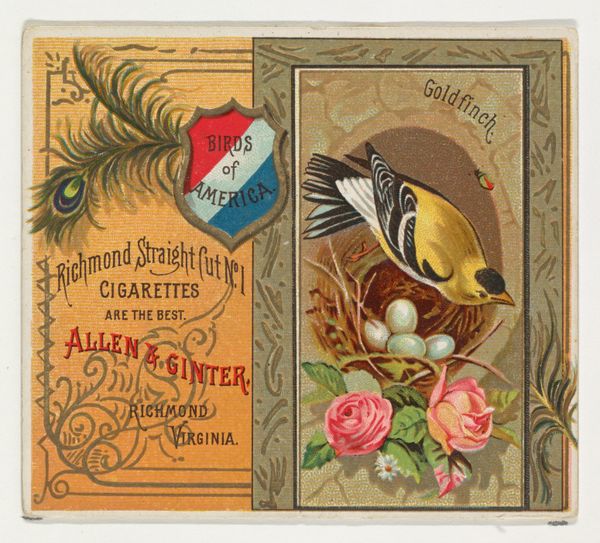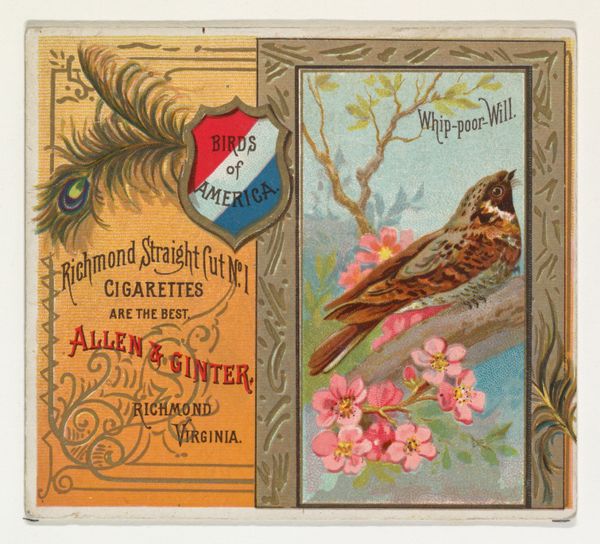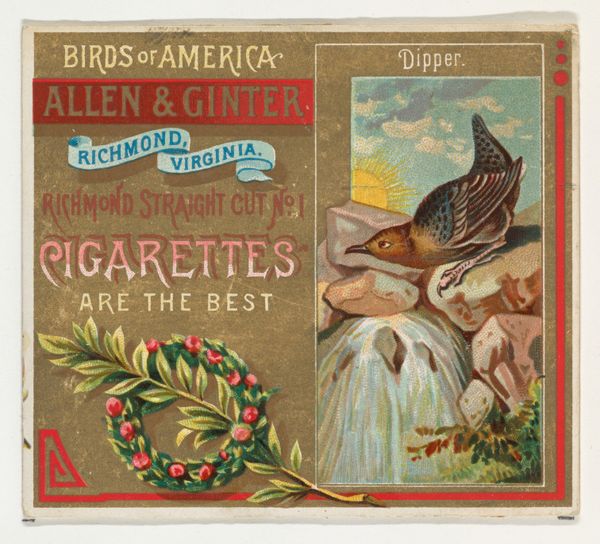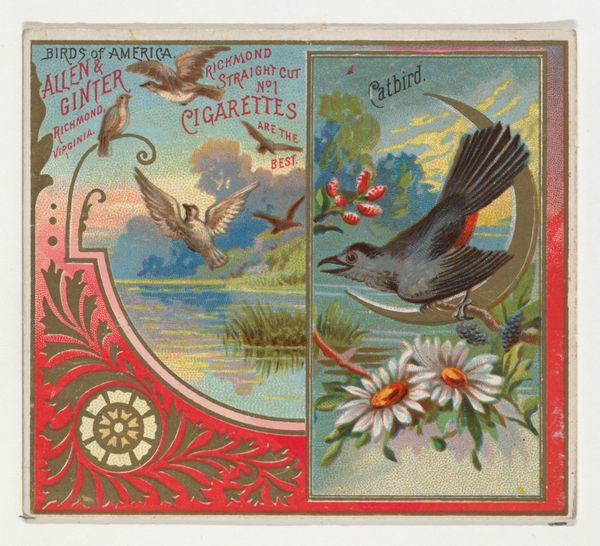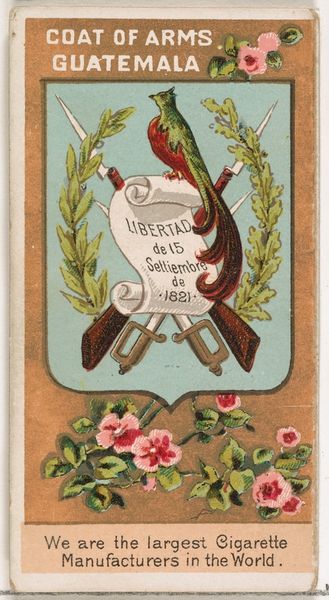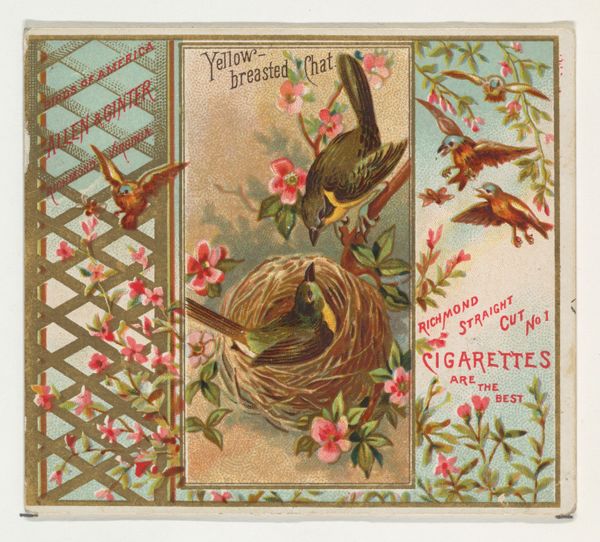
Scarlet Tanager, from the Birds of America series (N37) for Allen & Ginter Cigarettes 1888
0:00
0:00
# print
#
bird
Dimensions: Sheet: 2 7/8 x 3 1/4 in. (7.3 x 8.3 cm)
Copyright: Public Domain
Editor: This is a print called "Scarlet Tanager, from the Birds of America series (N37) for Allen & Ginter Cigarettes," dating back to 1888. I’m immediately struck by how the composition is split into two distinct panels – the natural world versus the text promoting the product. What is your perspective on how this work functions visually? Curator: The print presents a compelling interplay of dualities through pictorial structure. Note the sharp delineation between the avian portrait on the left, framed by the stone effect, and the text-dominated panel on the right which is made to look like wood panels, as evidenced by the typography that mimics engraved lettering, with embellishments that are reminiscent of a door. We have a dichotomy between nature and artifice, haven and market, all within a tight, geometric construction. Consider the placement of the scarlet tanager and the angle of the print's lettering - are they both not subtly trying to enter each other’s respective domains? Editor: I see what you mean! The bird almost seems to be breaking out of its framed space, and even the placement of the red word "cigarettes" in that side draws a parallel with the redness in the tanager. But where does that leave the flowers in the bird’s area? Curator: An astute observation! The flowers introduce an element of natural artifice or perhaps a domesticated beauty within the “nature” panel; they also cleverly mirror the curvature of the bird’s wing and perhaps even anticipate the scrolled corner adornments to the advertising section, binding the two panels formally together. The composition is carefully calibrated to manage competing visual languages and themes within a confined space. Editor: That’s fascinating; I hadn't considered the interplay between the curves and colors as actively contributing to unity across the contrasting sides. I’ll definitely pay more attention to the formal connections in similar works moving forward. Curator: Indeed, recognizing these formal relationships allows us a richer appreciation of visual arguments within any artwork, and especially in pieces such as this that might, at first, read as simply advertising material.
Comments
No comments
Be the first to comment and join the conversation on the ultimate creative platform.
